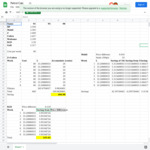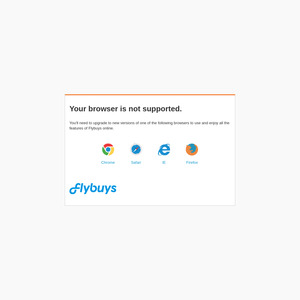This is why I feel Z and Caltex are the best stations to fuel up your petrol in Hamilton (potentially elsewhere in the country too). Although fuel price is usually more expensive at Z or Caltex compared with KLD or Mobil, after using the discounts from their reward program it always works out to be cheaper.
I have included a google spreadsheet to show how much savings I make every 2nd month by fueling up with Z or Caltex (depending on which station is cheaper at the time of fueling). Feel from to make a copy and input your own data.
Savings every 2nd month:
* Z or Caltex = $84.98
* Mobil = $52.07
* KLD = $31.61
Steps to get these savings at Z+Caltex:
- Change the currency of your Flybuys to Fuel Discounts
- Invest in a cheap fuel canister incase you can't fill the entire $40 into the tank in your car
- Choose Flybuys reward on your Z app and Caltex app
- Find the cheapest Caltex or Z station using Gaspy, Android, iOS, fuel up only on SuperPumped days (10c discount instead of 6c), usually every Wednesday in Hamilton.
- At the station fuel up $40 at a time*, you can pay at pump using your apps instead of running into the store to pay if you have multiple $40 fills.
- Choose to accumulate the savings
- Use the points on SuperPumped days before the points expire at the end of 2nd month **
* My car has a 70L tank so I usually fuel up near empty so I can fit at least 2 lots of $40 in one tank easy, this also saves me wasting petrol travelling to stations for fills. I also carry a 20L fuel canister with me for those times where I cannot fill the entire 2nd lot of $40 into my tank. I use the fuel in the canister every now and then to stretch me to the next SuperPumped day when needed. Although my calculation shows a saving of $80+ every 2nd month, in reality I usually get a free tank of fuel at the end of 2nd month because you can also accumulate Flybuys elsewhere.
** Have to make sure your total accumulated points do not exceed the fuel price, otherwise all the extra accumulations are wasted, i.e. if you accumulated $2.42 off per litre and the fuel price is $2.40, you have wasted $0.02 off per litre.
For those wanting more details please read on:
Z + Caltex
On average I use $80 of fuel per week which allows me to fuel up 2 lots of $40 at Z or Caltex, I use the remaining fuel in the canister to "smooth out" the fueling frequency. This means I get to accumulate 20c (10c per $40) every week. The reason I use 2 months cycle is because points expire at the end of the month following the month in which the point was earned. On top of that every 20L gives you 1 Flybuys and every 4 Flybuys gives you further 3c off/L. For those who buy coffee or other items with Z, they also give you Flybuys there, I have not included this in the calculation so we can compare this calculation equally with other fuel companies.
Mobil
With Farm Source Supercard you get 16c off which equates to $42.5 savings at the end of the 2nd month. Fuel is usually cheaper at Mobil compared to Z or Caltex which gives you a further saving of $4.2 at the end of 2nd month, on top that you can also accumulate Smiles which gives you $5.2 at the end of 2nd month. Mobil give you 1 smiles point per regular 91 and 1.5 smiles per 95 or 98, for my speadsheet I have used savings for 91 only.
300 Mobil Smiles points = $5
500 Mobil Smiles points = $10
1500 Mobil Smiles points = $30
It is best to use the smile points when you reach 500 points so I have used this option for the calculation. The total savings from Mobil gives you $52.07 for the same about of L of fuel at the end of 2nd month.
KLD
KLD in Hamilton usually give the best price for fuel, I am not aware of any reward program with them. According to my calculation at the end of 2nd month you get a saving of $31.61.
If you have any questions feel free to ask and I will try and answer if anything is not clear.



You cannot accumulate Mobil Smiles on top of Farmsource 16c discount.